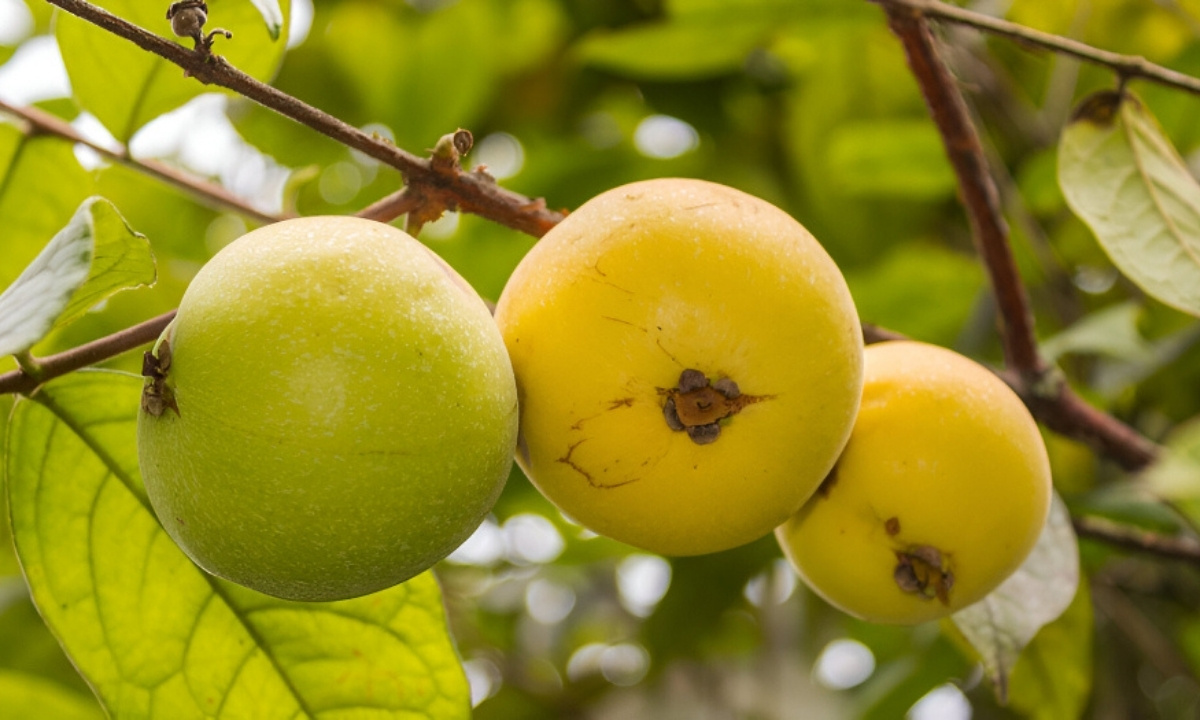
Araza, a tropical fruit native to the Amazon rainforest, is a hidden gem in the world of exotic fruits. Known for its vibrant yellow color and tangy flavor, this fruit is not just delicious but also packed with nutrients. Araza is rich in vitamin C, making it a great choice for boosting your immune system. It also contains antioxidants that help fight off free radicals in the body. But that's not all—Araza is also used in various culinary dishes, from juices to desserts. Curious about this unique fruit? Here are 35 fascinating facts that will make you appreciate Araza even more.
What is Araza?
Araza, also known as Eugenia stipitata, is a tropical fruit native to the Amazon rainforest. This fruit is not only unique in taste but also packed with numerous health benefits. Let's dive into some fascinating facts about Araza.
Nutritional Benefits of Araza
Araza is a powerhouse of nutrients. Here are some key nutritional facts that make this fruit a must-try.
- Araza is rich in Vitamin C, which helps boost the immune system and fight off infections.
- The fruit contains antioxidants that help protect the body from free radicals and reduce oxidative stress.
- Araza is a good source of dietary fiber, aiding in digestion and promoting gut health.
- It contains potassium, which is essential for maintaining healthy blood pressure levels.
- The fruit is low in calories, making it a great option for those looking to maintain or lose weight.
Unique Characteristics of Araza
Araza stands out not just for its nutritional value but also for its unique characteristics.
- The fruit has a tart and tangy flavor, often compared to a mix of lemon and passion fruit.
- Araza has a bright yellow skin when ripe, making it visually appealing.
- The fruit's pulp is juicy and aromatic, often used in beverages and desserts.
- It grows on a small tree or shrub, reaching up to 15 feet in height.
- Araza is native to the Amazon rainforest, particularly found in Brazil, Peru, and Ecuador.
Uses of Araza in Culinary
Araza is versatile in the kitchen. Here are some ways this fruit is used in culinary practices.
- Araza is commonly used to make juices and smoothies due to its refreshing taste.
- The fruit's pulp is often used in jams and jellies, adding a unique flavor.
- Araza can be incorporated into sauces and dressings, enhancing the taste of various dishes.
- The fruit is sometimes used in desserts, such as ice creams and sorbets.
- Araza can be fermented to produce alcoholic beverages, like wines and liqueurs.
Health Benefits of Araza
Beyond its nutritional value, Araza offers several health benefits that make it a valuable addition to your diet.
- The high Vitamin C content helps in collagen production, promoting healthy skin.
- Araza's antioxidants can help reduce inflammation in the body.
- The fruit's fiber content aids in regulating blood sugar levels.
- Araza can help improve heart health by lowering cholesterol levels.
- The fruit's potassium content helps in maintaining electrolyte balance.
Araza in Traditional Medicine
In traditional medicine, Araza has been used for various purposes. Here are some traditional uses of this fruit.
- Araza has been used to treat digestive issues, such as diarrhea and constipation.
- The fruit is believed to have antimicrobial properties, helping to fight off infections.
- Araza has been used to boost energy levels, thanks to its nutrient-rich profile.
- The fruit is sometimes used to alleviate respiratory issues, such as coughs and colds.
- Araza has been used to promote wound healing, due to its high Vitamin C content.
Cultivation and Harvesting of Araza
Growing and harvesting Araza requires specific conditions. Here are some interesting facts about its cultivation.
- Araza thrives in tropical climates, requiring warm temperatures and high humidity.
- The fruit is typically harvested during the rainy season, ensuring optimal growth.
- Araza trees prefer well-drained soil, rich in organic matter.
- The fruit is usually hand-picked to avoid damage and ensure quality.
- Araza trees can start producing fruit within 2-3 years of planting.
Environmental Impact of Araza
Araza cultivation has an impact on the environment. Here are some facts about its environmental significance.
- Araza trees help in preventing soil erosion, thanks to their root systems.
- The fruit's cultivation supports biodiversity in the Amazon rainforest.
- Araza farming can provide sustainable livelihoods for local communities.
- The fruit's trees can act as carbon sinks, helping to mitigate climate change.
- Araza cultivation promotes agroforestry practices, integrating trees and crops for sustainable farming.
The Final Word on Araza
Araza is a fascinating fruit with a lot to offer. From its unique flavor to its nutritional benefits, it's clear why this tropical gem is gaining attention. Packed with vitamin C, antioxidants, and fiber, araza can boost your health in delicious ways. Its versatility in recipes, from juices to desserts, makes it a fun addition to any kitchen. Plus, its potential health benefits like improving digestion and boosting immunity make it worth trying. Whether you're a foodie looking for new flavors or someone interested in natural health, araza has something for you. So next time you see this yellow fruit, give it a try. You might just find a new favorite.
Was this page helpful?
Our commitment to delivering trustworthy and engaging content is at the heart of what we do. Each fact on our site is contributed by real users like you, bringing a wealth of diverse insights and information. To ensure the highest standards of accuracy and reliability, our dedicated editors meticulously review each submission. This process guarantees that the facts we share are not only fascinating but also credible. Trust in our commitment to quality and authenticity as you explore and learn with us.
